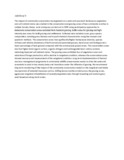| dc.contributor.author | Ranst, Eric V | |
| dc.contributor.author | Warinwa, Fiesta | |
| dc.contributor.author | Gachene, Charles K K | |
| dc.contributor.author | Njoka, Jesse T | |
| dc.contributor.author | Verdoodt, Ann | |
| dc.contributor.author | Mureithi, Stephen M | |
| dc.date.accessioned | 2014-12-20T08:50:13Z | |
| dc.date.available | 2014-12-20T08:50:13Z | |
| dc.date.issued | 2014 | |
| dc.identifier.citation | Mureithi S. M., Verdoodt A., Njoka J. T., Gachene C. KK., Warinwa F. and Van Ranst E., (2014), IMPACT OF COMMUNITY CONSERVATION MANAGEMENT ON HERBACEOUS LAYER AND SOIL NUTRIENTS IN A KENYAN SEMI-ARID SAVANNAH, Land Degrad. Develop | en_US |
| dc.identifier.uri | http://hdl.handle.net/11295/78140 | |
| dc.description.abstract | The impact of community conservation management on a semi-arid savannah herbaceous vegetation and soil nutrient status was studied in the conservation and grazing zones of two community ranches in Laikipia County, Kenya. Land zoning was carried out in 1999 using participatory approaches to demarcate conservation areas excluded from livestock grazing, buffer areas for grazing and high-intensity use zones for both grazing and settlement. Collected data included cover, grass species composition, standing grass biomass and topsoil chemical characteristics using line transect and quadrant methods. The conservation zones had significantly higher herbaceous diversity, species richness and relative abundance of both annual and perennial grasses, basal cover and herbage and a lower percentage of bare ground compared with the continuously grazed zones. The conservation zones also had higher total organic carbon, organic nitrogen and exchangeable basic cations content, indicating improved soil nutrient status. The grazing zones exhibited loss of vegetation cover and reduction of forage production, with a decline in rangeland condition, whereas the conservation zones showed recovery and improvement of the rangeland condition. Long-term implementation of Natural resource management programme in community wildlife conservancies seems to drive the semi-arid savannahs to exist in two steady states and transitions under the influence of grazing. We recommend long-term monitoring of the impact of the community conservation model on the rangeland and timely incorporation of remedial measures such as shifting bomas (cattle corrals) across the grazing zones, aggressive rangeland rehabilitation of severely degraded areas through reseeding and random grass seed broadcast along stock routes. | en_US |
| dc.language.iso | en | en_US |
| dc.title | Impact of community conservation management on herbaceous layer and soil nutrients in a Kenyan semi‐arid savannah | en_US |
| dc.type | Article | en_US |
| dc.type.material | en | en_US |

